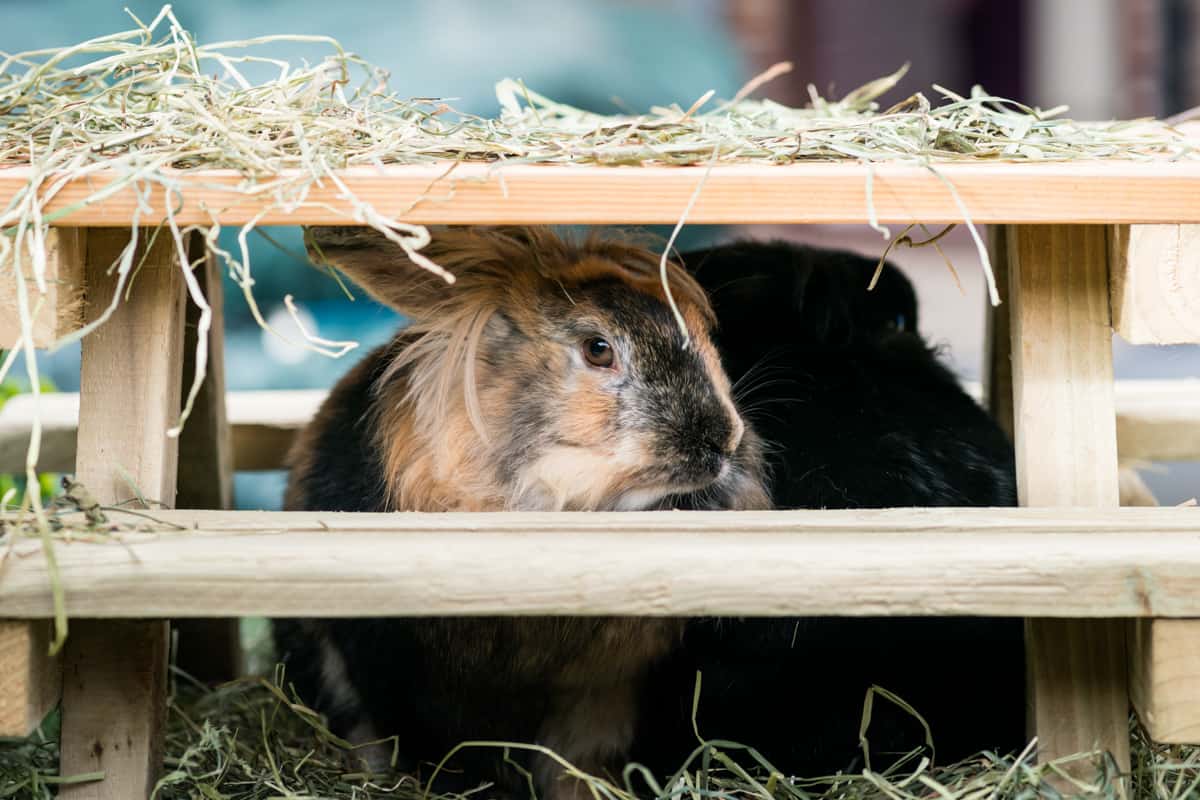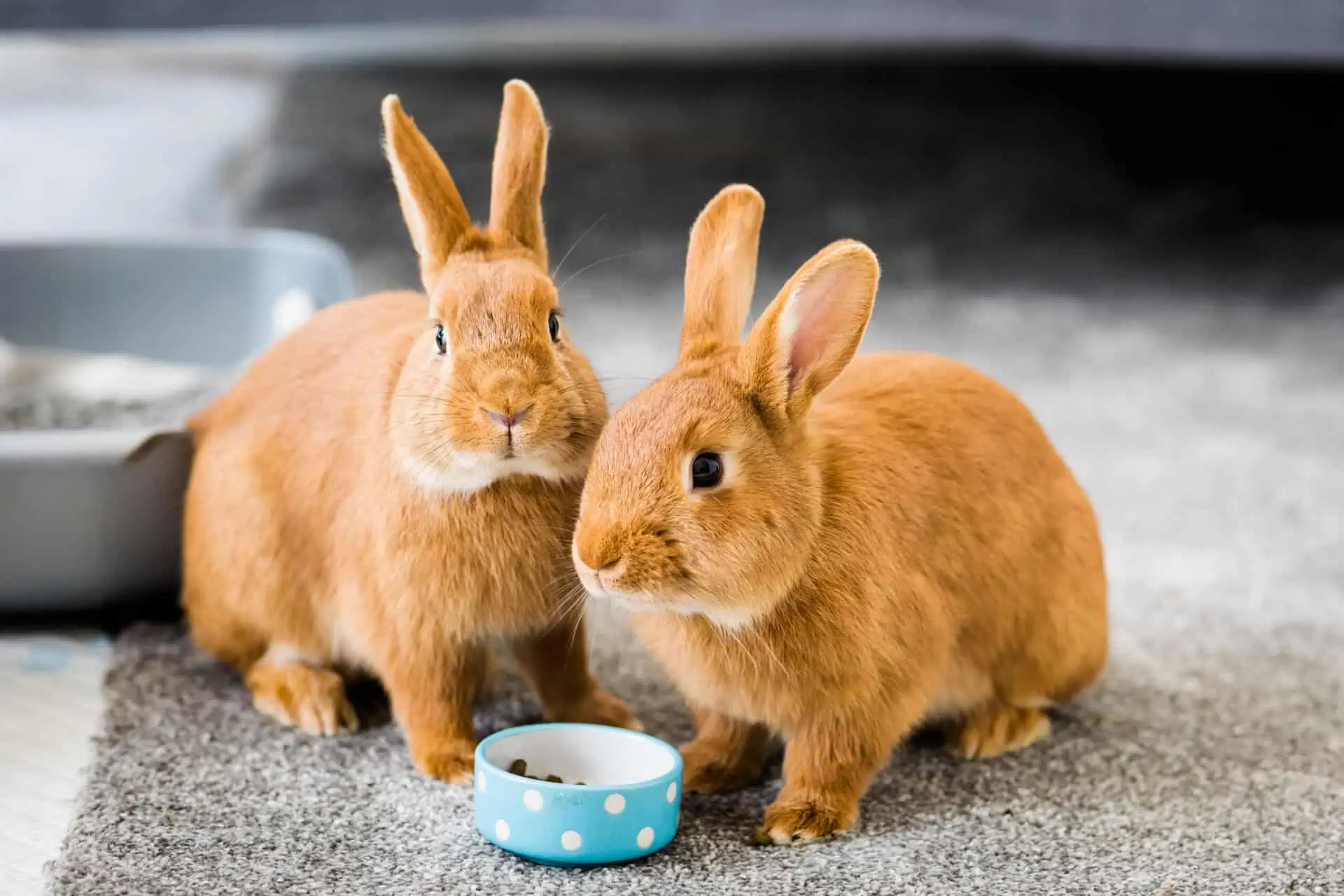The Guide to Rabbit Housing
Where do rabbits live in the wild?
In the wild rabbits live all over our countryside landscapes. Rabbit habitats can cover farmland, grassy lands, and moorland. You can even sometimes spot them in your garden. Living in large groups, rabbits live in warrens, large underground tunnel systems. Rabbit warrens vary in size, with one study finding a 5-year-old rabbit warren that had 150 entrances and had an incredible 517 metres of tunnels.
In the domestic setting, pet rabbits can live either indoors or outside. Either environment is suitable for your rabbits, as long as they have access to everything they need to stay happy and healthy.
For more information on indoor and outdoor set ups, check out our help guides.
Indoors or outdoors: Where should my pet rabbits live?
Whether your rabbits live indoors or outdoors, the fundamentals of great rabbit housing are the same. The Rabbit Welfare Association of Fund recommends a minimum enclosure size for two bonded rabbits is 3m x 2m x 1m high and that your rabbits have access to their sleeping area, toilet area, and exercise area at all times.
Fundamentally, a rabbit hutch is not enough. Whether you have an indoor rabbit hutch, or outdoor, your rabbits need more space. There are lots of rabbit hutches for sale, however, it’s vital to make sure that whichever housing you choose, it meets the size requirements your rabbits need.
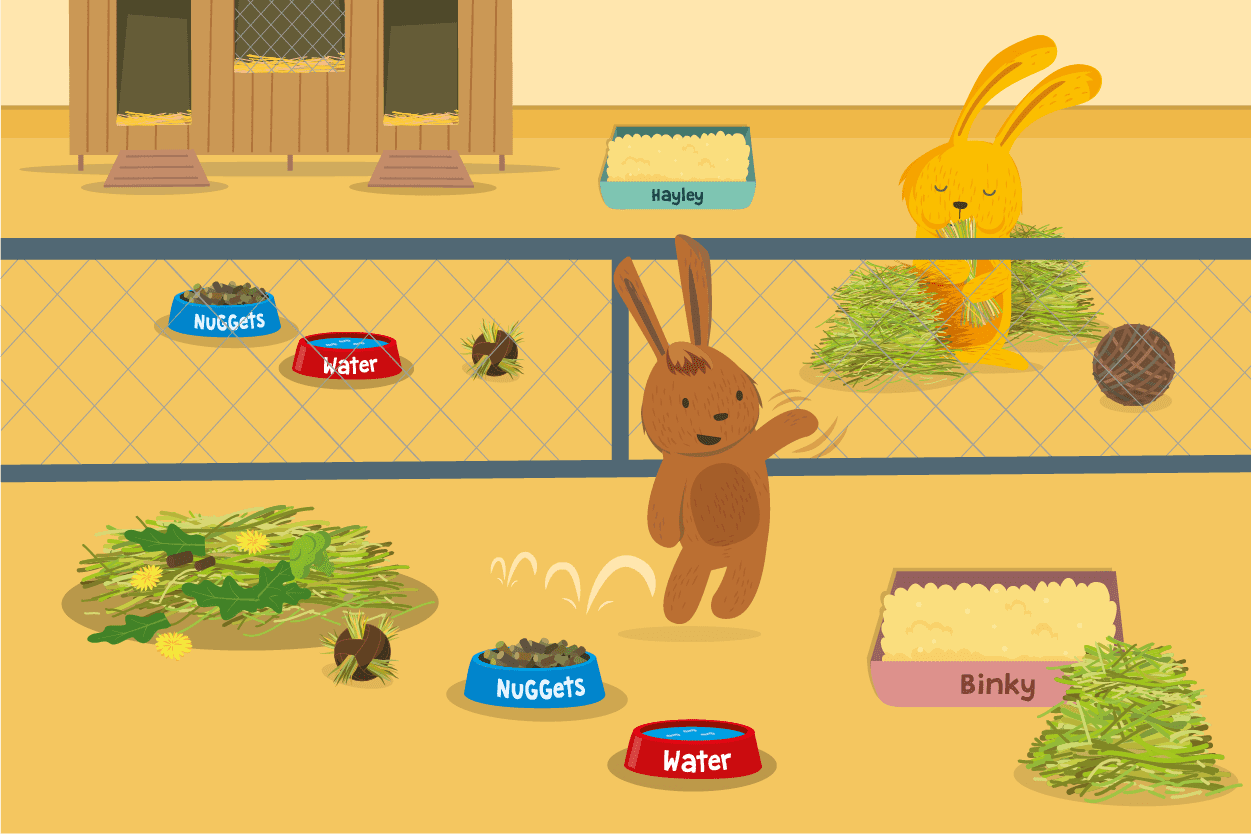
What do I do if I already have a rabbit hutch?
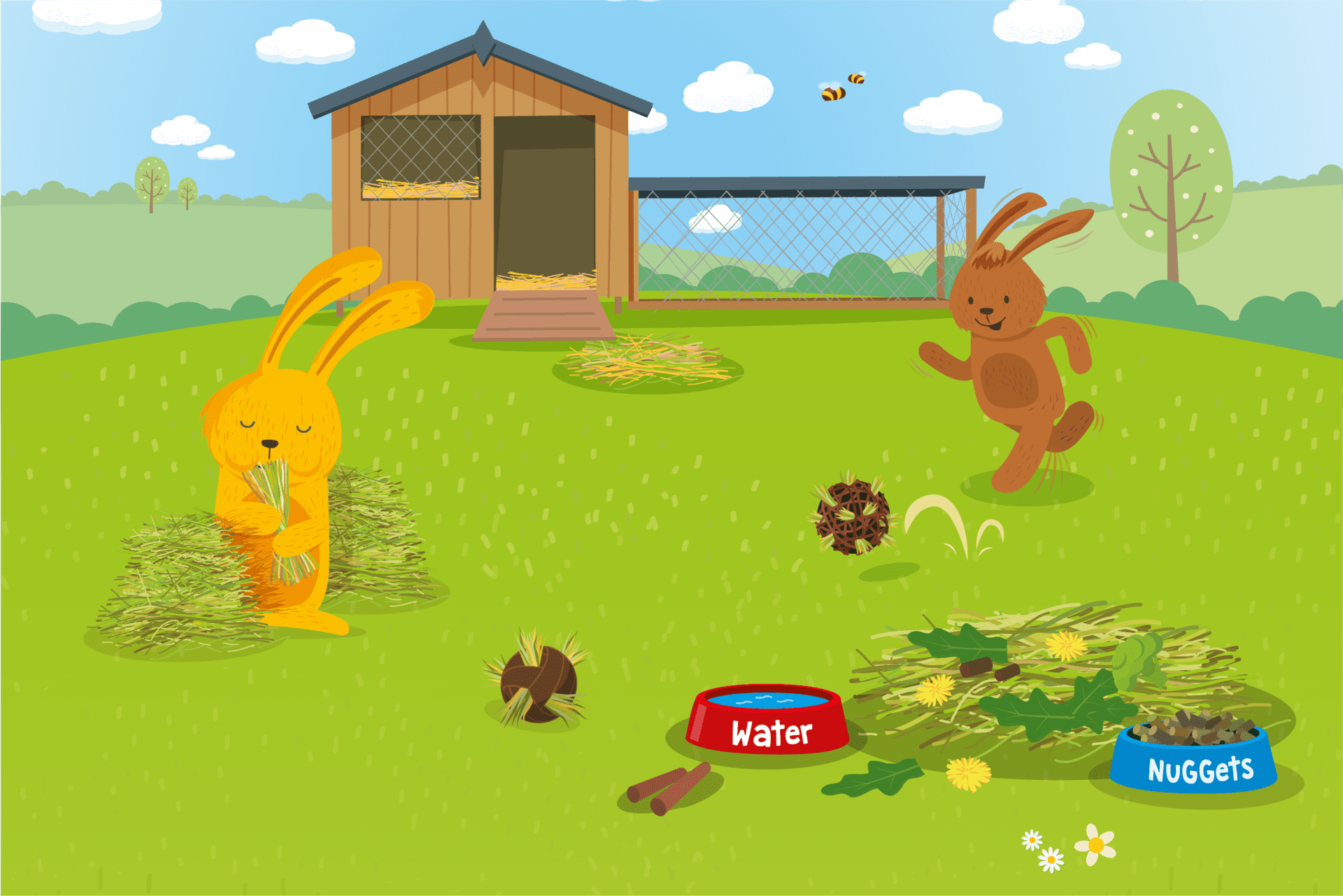
Why do rabbits need so much space?
What do my rabbits need in their enclosure?

Rabbits are prey animals – they need places to hide

Rabbit friendly toys

Give your rabbits constant access to lots of high-quality feeding hay or fresh grass
85-90% of your rabbits’ diet should be high-quality feeding hay or fresh grass. There are lots of options to choose from, for example, Burgess Excel rabbit feeding hay. The easiest way to make sure they’re getting enough rabbit feeding hay is to give them constant access around their housing.
Hay racks are a good option for rabbits. Rabbit hay racks can be hung around their housing or can be freestanding, and they encourage your rabbits to reach for their hay. You can choose wooden hay racks, or metal, and can pop as many as you like around their enclosure. You can create DIY hay racks using cardboard boxes or baskets and filling them with tasty feeding hay for rabbits.
You can also put feeding hay into piles around your rabbits’ housing. They’ll enjoy burrowing into their hay and chewing their way out.
As well as lots of tasty feeding hay, don’t forget to give your rabbits constant access to clean, fresh water.

Rabbits love to poo and chew!

Give your rabbits a great night’s sleep with a cosy sleeping area
How to clean your rabbits’ housing
Your rabbits’ entire housing will need regular cleaning. This includes cleaning their rabbit hutch, or sleeping area, and their attached exercise area too. Rabbit safe cleaning supplies are readily available online or at most pet shops.
Do a quick spot check every day, throwing away wet or dirty materials, including bedding and uneaten food. At a minimum, each week remove and replace all their litter and bedding materials. Complete a more thorough clean and remove any waste or droppings from your rabbits’ housing. Once a month, give your rabbits’ enclosure a really thorough, deep clean. Take everything out and use a rabbit friendly cleaner to give their housing and enrichment resources a clean. Replace with clean, fresh bedding, feeding hay, and water.
